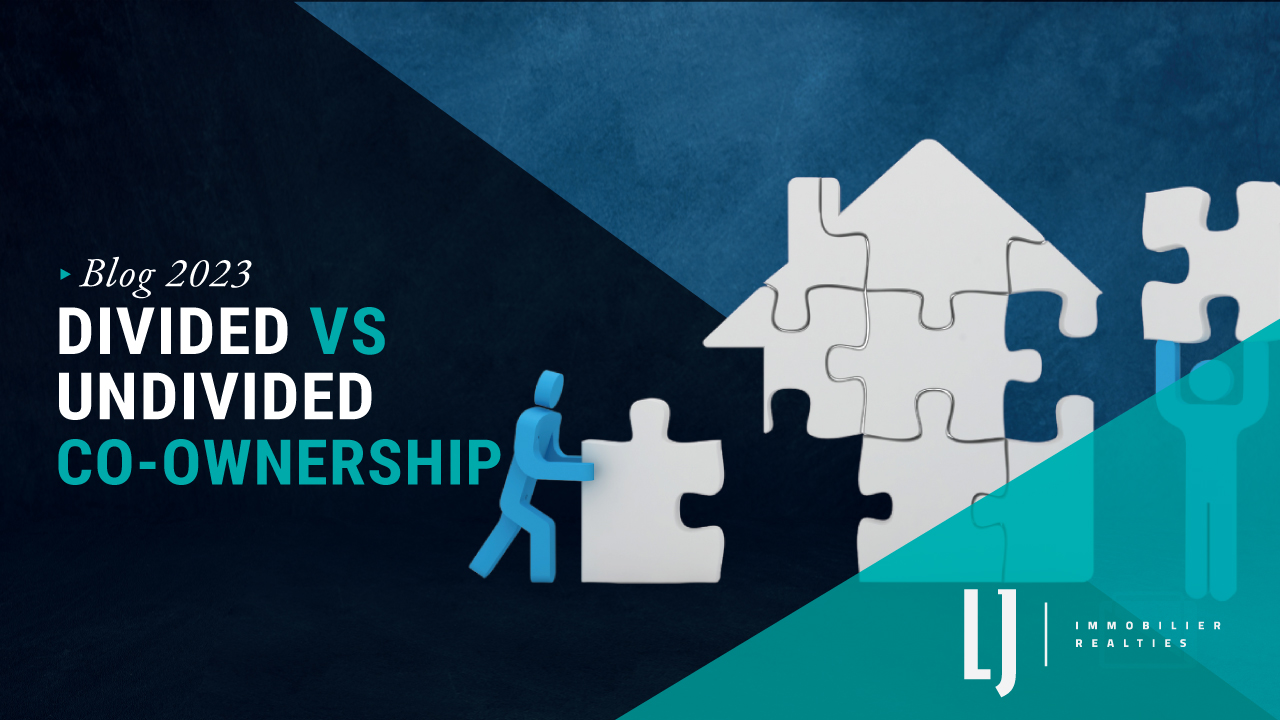
If you’re looking to buy a condo, you’ve likely run into the terms “divided” and “undivided.” These two ownership structures have very different implications for the owner – let’s explore.
Simply put, a divided condo is just like buying a house or any other product on the real estate market. You are going to have your own lot number, your own municipal and school tax account, and you’ll be responsible for all of your own things individually. You can also go to any bank for your mortgage, and you can put as little as 5% down. The same is true for your insurance policy – you can shop around and go with whichever provider you prefer.
Divided properties also give you a lot more indepence regarding how you organize yourself as a homeowner. Your building will have a general set of bylaws that all co-owners will need to follow, but you’re free to do as you please besides that. For example, you’ll be able to renovate your bathroom based on your aesthetic preferences, but the building will likely require the work to be done by a licensed contractor with a valid insurance policy.
Finally, it’s much easier to rent out a divided condo. You’ll likely have some restrictions to follow, like a ban on short-term rentals, but other than that it should be easy to use the unit as an investment property. Just make sure to read the Declaration of Co-Ownership from cover to cover so you can understand the ground rules.
An undivided condo works differently! Think of it as you buying shares of a company, and the building that houses all the units is the company you’re buying into. So you will get, say, 3% of that building, which means you are responsible for 3% of the tax account.
That usually ends up being a little bit cheaper than taxes for an individual unit, and you’re still going to have the exclusive right of use for your independent unit. However, you don’t actually own that square footage; you own a percentage of the building itself.
Where this gets a bit complicated is that you need to put at least 20% down for undivided properties, and you can only finance it with Desjardins or National Bank (depending on which bank already services the building). All co-owners must follow this rule, and you won’t be able to shop around.
Another important thing to note is that not all banks will let you rent out your unit! Therefore, you have to make sure you get approval from the banks themselves, and depending on how the indivision agreement is written, you’ll have to get approval from the other co-owners. Reading the indivision agreement thoroughly is an absolute must so you know exactly what you’re agreeing to!
It’s also important to note that undivided ownership is more of a partnership. You’re a little bit more involved with everybody else than in a standard co-ownership. If there’s an incident, you’re still responsible for your share, just as you would be in a divided ownership. But with a divided property, you only have to put 5% down depending on the purchase price.
When purchasing a property, you also want to think about resale value and potential. Since divided properties allow for smaller down payments, they typically attract a larger pool of buyers; not everyone can afford or will be comfortable with putting down 20% or more. Keep this in mind when considering which type of property is best for you.
Both options have their pros and cons: if you want to save a little money on taxes, undivided might be the way to go. But if you want to put less money down and be a more independent homeowner, divided ownership might be a better option. No matter what you choose, it’s incredibly important to read through the documentation.
Want to dive even deeper into the available options? We’re always happy to chat!





